The nonprofit sector in the United States boasts a staggering number of over 1,540,000 organizations, each dedicated to various causes. But not all nonprofits are equal. The disparate nonprofit landscape underscores the challenges for small nonprofits: only 3% generate revenue above $5 million. These nonprofits are large national institutions, many with revenue in the billions, and with tremendous influence. Most of the remaining 97% raise less than $99,000 a year.
Why Smaller Foundations Fail
While size is one reason many nonprofits struggle to achieve meaningful impact there are other perhaps more important reasons. The challenges that plague the sector, and why a substantial portion of these organizations are not effective are attributed to operational shortfalls and inapt strategies.
Operational Shortfalls
Most nonprofits are started by someone touched by a personal tragedy or motivated by an injustice. While their hearts are in the right place, their skill set may not provide what is necessary to build, operate, and grow the organization in a way required to be successful. Effective leaders are visionary, focused, and create a culture of innovation: important attributes to be successful. Conversely, inexperienced or unqualified leadership can drive a nonprofit into trouble from the outset.
Many smaller nonprofits lack the knowledge or funding to integrate efficient technology solutions into internal workflows, fundraising, communications, and finance operations. As a result, they don’t have the time to focus on the initiatives that help them achieve meaningful progress. Further, those foundations focused on medical cures should include machine learning (AI) as a core element of their discovery process. Very few have this capability or are considering it, leading to a failure to optimize operations.
Inapt Strategies
Unfortunately, many smaller nonprofits have not taken the time to develop a mission statement, or they’ve drafted amission that is not audacious or measurable. One of the primary issues facing nonprofits is the lack of clear challenging goals and measurable outcomes. Without well-defined objectives, organizations often find themselves adrift, unable to demonstrate tangible results to their stakeholders. Additionally, an overemphasis on fundraising can divert attention from the core mission, turning nonprofits into entities more focused on sustaining themselves than effecting change.
Further, there is prevalent absence of collaboration and partnerships. All nonprofits should collaborate and build meaningful partnerships that place the goal ahead of the institution’s drive for recognition. This is as true for the 3% of the largest nonprofits as it is for the 97% that are minimally funded. No matter the size, it should be a strategic imperative for nonprofits. Sadly, it is not. For smaller nonprofits, they become burdened with excessive overhead and have zero influence. While the founders and supporters feel good about what they advocate, they achieve little.
As a result of operating shortfalls and inapt strategies, combined with the larger nonprofits dominating the nonprofit community, half of the smaller nonprofits fail, and those that survive have minimal impact, if any.
Why Bridge To A Cure Has Flourished
The progress highlighted in our 2022 annual report took many by surprise; we welcomed the accolades. Accompanying the accolades were often followed with the same question: Given Bridge To A Cure’s modest revenue stream, how has it been able to help propel advancements in pediatric cancer, specifically childhood brain tumor cancer? Or how is it that the Bridge to a Cure Foundation is dramatically overperforming versus the status quo?
Simply, Bridge To A Cure excels at each of the operational and strategic imperatives identified above.
Operational Excellence
Bridge To A Cure Foundation has been built by qualified personnel: seasoned leadership, board of directors members, and advisors from industry and childhood cancer research with a track record of success. Bridge To A Cure executives apply years of experience competing, developing strategic advantages, optimizing resources, creating cultures of innovation, building strategic partnerships, responding quickly to challenges and opportunities.
Robust technology also is crucial to Bridge To A Cure success. We use multiple cloud-based applications to manage what is “backroom” operations: finances, fundraising, communications, and market research. This allows us to focus on building partnerships that will advance our mission and influence key decision-makers to drive the change needed to transform the childhood cancer community’s approach to research.
Effective Strategies
Our mission inspires us emotionally and creatively, it serves as a guideline for collaborating and partnering with like-minded organizations and targeting the right audience for support. Our strategies rely on strong strategic partnerships, with the goal of getting the right data and the right technology in the right hands. And, we are focused, we will cure childhood brain tumor cancer.
We have a mission that is audacious and measurable: To unite and transform the childhood cancer community’s approach to research with the goal of cutting childhood cancer death rate 50% by 2030.
Collaboration and strategic partnerships have been strategic imperatives since the begging. Today, we collaborate with over 20 other childhood brain tumor cancer nonprofits and several of the largest nonprofit institutions, including a partnership with the largest childhood brain tumor organization in the world. We have attracted board of director members and board of advisors that are leaders in industry and childhood cancer research. We have the loyal support of 400 donors and over 2,000 followers that are champions of our mission and appreciative our progress.
In our determination to end childhood cancer, Bridge To A Cure Foundation, in collaboration with its partners, has made remarkable advancements this past year. Through a multifaceted approach that emphasizes collaboration, open science, and the application of groundbreaking technologies, the foundation has brought together well-positioned individuals, forged vital partnerships, harnessed the power of data-driven research, and achieved transformative breakthroughs. These accomplishments have improved patient care and treatment outcomes and propelled advancements in the broader healthcare research field.
Exponential Impact in 2023
While a $250,000 foundation might seem modest, Bridge To A Cure has exponentially multiplied our impact in 2023 by targeting research and nonprofit organizations that share our mission and have the scientific resources and government influence to achieve it. And, we contributed strategic planning and communication skills found at senior executive levels within the business community. Over the past few years, these targeted organizations have come to rely on us to play this role. In doing so, Bridge To A Cure has become a crucial player in the childhood cancer research landscape, facilitating progress far beyond its financial size.
Empowering Key Individuals
The foundation supported our former executive director, Wendy Payton, as she transitioned to an executive role at the Children’s Brain Tumor Network (CBTN). Bridge To A Cure Foundation plays an active role at CBTN as an Executive Council member. In addition, Foundation president Robert Martin sits on its Executive Committee. Wendy’s transition to CBTN further enhances the foundation’s impact of bringing its vision and strategic objectives to a wider audience within the CBTN, fostering collaboration and pushing for progress. Wendy continues her involvement with Bridge To A Cure as a member of our board of directors.
In addition, we welcomed new board member Nan Smith, who contributes valued perspectives from her expertise as a cancer patient advocate and research patron. Smith brings fundraising acumen built over 30 years of philanthropic projects, including the Hackers for Hope charity golf tournament, which raised over $20 million for cancer research programs. Her experience includes leadership positions at innovative nonprofit organizations Americares and Changing Our World. The addition of Nan to the board amplifies the caliber and expertise inherent within Bridge To A Cure Foundation leadership.
Strengthening Partnerships
CBTN expanded our reach in 2023 by welcoming two new pediatric healthcare member institutions, Children’s Healthcare of Atlanta and Maria Fareri Children’s Hospital, part of the Westchester Medical Center Health Network. And, CBTN is working to align with six additional institutions in the onboarding stage of membership. This exponential growth signifies the increasing recognition of the collaborative model and the trust bestowed upon CBTN to drive this strategy.
This year we marked the milestone of 5,000 child patient enrollees into CBTN, accompanied by the additional participation of now over 2,500 family members. Such levels of engagement have fortified the CBTN with an extensive dataset crucial for researchers across the globe. We do not celebrate this achievement because it means we have not yet accomplished our mission. But we honor these courageous children and families for their belief that what we are all doing together will help us end childhood cancer once and for all. Through this collective effort, Bridge To A Cure is helping to revolutionize childhood cancer research and providing researchers with the tools they need to advance progress.
Additionally, a significant milestone was achieved through a partnership forged between CBTN and Amazon Web Services (AWS) to drive AI innovation in patient care. Leveraging AWS’s cutting-edge technologies, the world’s largest data repository of its kind at CBTN, this powerful collaboration is working to develop individualized treatment protocols for doctors and their patients while empowering scientists and researchers worldwide with new cloud-based tools for data-driven discovery.
Harnessing Technological Expertise
Recognizing the potential of cloud-based computing and artificial intelligence (AI), the experts within the CBTN network have applied these technologies to not only drive childhood cancer research but also revolutionize broader healthcare research. By leveraging the power of AI and cloud computing, researchers are unlocking new insights into disease mechanisms, genetic variations, and potential treatment pathways. This interdisciplinary synergy is poised to deliver transformative outcomes in the quest for cures.
Influential Voices in Research
CBTN’s Co-Executive Director, Dr. Adam Resnick, has emerged as a prominent figure in data-driven bioscience discovery. He regularly makes appearances at patient advocacy and scientific conferences, including participation in the White House Cancer Moonshot gathering this past fall. His colleague Dr. Allison Heath, CBTN Director of Data Technology and Innovation, and others from CBTN also led engaging and thought-provoking presentations within the scientific research community this past year. This included participation in a prominent panel discussion at the AWS Summit in Washington, D.C. in September, where she joined leaders from AWS, the NIH National Cancer Institute, and the White House Cancer Moonshot. These discussions gained significant traction around the topics of how cloud-based open science research models are eliminating silos and allowing scientists across the globe to analyze – in real-time – medical records and other data to accelerate research and aid in the development of new therapies.
Transformational Research Progress
Significant progress has been made through transformative research initiatives in various domains. Notably, an imaging study utilizing AI has provided three-dimensional tumor images, aiding in the detection of tumor changes faster than traditional radiology methods alone. This breakthrough expedites diagnosis and treatment decisions, resulting in improved patient outcomes as timely and accurate interventions become possible. It signifies a pivotal step towards personalized, effective treatments and realizing the foundation’s overarching goals. It’s just a glimpse of what is possible through AI technology and open science.
In its collaborative efforts, Bridge To A Cure Foundation has delivered remarkable achievements in 2023, vastly outperforming what many thought possible for a smaller foundation such as ours. The alignment of key individuals, strengthening partnerships, technological advancements, amplification of influential voices, and transformational research breakthroughs reflect the foundation’s unwavering commitment to driving cures for children with cancer as we move forward into 2024.
And just as Bridge To A Cure could not make these advancements alone, neither could we continue to operate without the giving and advocacy of our friends and donors. It takes all of us doing our part, and we are so grateful for your support and encouragement over the past 6 years. Through the application of cutting-edge technologies and the global collaboration facilitated by Bridge To A Cure Foundation initiatives and upheld by you, hope shines brighter than ever for the future of childhood cancer research and beyond.






